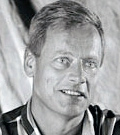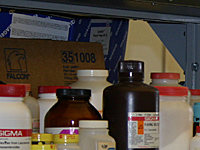Per Borgström, Ph.D.

Associate Professor, Vaccine Research Institute of San Diego
Associate Professor, Vascular Biology, Sidney Kimmel Cancer Center
Ph.D., Circulatory Physiology, University of Lund, Sweden
Postdoctoral Training University of California San Diego
Research Interests:
Animal models are crucial to further our understanding of the mechanisms of (progressive) growth of cancer. Currently used rodent tumor models, including transgenic tumor models, or subcutaneously-growing human tumors in immunodeficient mice, do not sufficiently represent clinical cancer, especially with regard to metastasis and drug sensitivity. Preclinical tumor model systems employed to evaluate potential new treatment strategies should aim to represent the process and patterns of metastasis of their clinical counterparts as closely as possible.
The Borgström lab has developed a unique animal model which is based on the dorsal skin fold chamber technique in mice. The model, in awake mice, using fluorescence video-microscopy allows the evaluation not only tumor growth and angiogenic activity, but also mitotic and apoptotic indices as well as tumor cell migration, of implanted tumor spheroids.
A critical aspect in understanding and treating cancer progression and metastasis is the relationship of the host originating organ and metastatic "soil" organs that support the growth and progression of the cancer "seed". We have successfully grafted a variety of organ tissues, including prostate, liver, lung, mammary fat pad, ovarian tissue, in the chamber model, and shown that it is possible to grow tumor spheroids in explants from these different tissues. We have generated cDNA encoding a Histone H2B-GFP fusion protein under the 5'LTR in the LXRN retroviral cassette, and have introduced it into a number of cancer cell lines by retroviral transduction.
In the model multicellular spheroids are used as the source for transplants. The use of tumor spheroids as the source of transplants allows precise determination of tumor size to be implanted The model allows continuous measurements of both growth and angiogenesis of the small tumor spheroids. We have used this system to evaluate various therapeutic interventions on several cancer cell lines.
Representative Publications:
1. Jin H, Aiyer A, Su J, Borgstrom P, Stupack D, Friedlander M, Varner J. A homing mechanism for bone marrow-derived progenitor cell recruitment to the neovasculature. J Clin Invest. 2006 Mar;116(3):652-62.
2. Huang Y, Lee C, Borgström P, Gjerset RA. Macrophage-mediated Bystander Effect Triggered by Tumor Cell Apoptosis. Mol Ther.2007 Mar;15(3):524-33.
3. Tang Y, Borgstrom P, Maynard J, Koziol J, Hu Z, Garen A, Deisseroth A. Mapping of angiogenic markers for targeting of vectors to tumor vascular endothelial cells. Cancer Gene Ther. 2007 Apr;14(4):346-53.
4. Liu Y, Koziol J, Deisseroth A, Borgstrom P. Methods for delivery of adenoviral vectors to tumor vasculature. Hum Gene Ther. 2007 Feb;18(2):151-60.
5. Oh P, Borgström P, Witkiewicz H, Li Y, Borgström BJ, Chrastina A, Iwata K, Zinn KR, Baldwin R, Testa JE, Schnitzer JE. Live dynamic imaging of caveolae pumping targeted antibody rapidly and specifically across endothelium in the lung. Nat Biotechnol. 2007 Mar;25(3):327-37.
Biography:
Per Borgström earned his Ph.D. in Circulatory Physiology from the University of Lund, Sweden, and carried out his postdoctoral training at UCSD, after which he was appointed a Research Physiologist at La Jolla Institute for Expermental Medicine. Per Borgström is the founder of Halocyme (formerly Deliatroph Pharmaceuticals), which is currently listed at NASDAQ. From 1999 through 2009 he worked at The Sidney Kimmel Cancer Center, as Assistant and later Associate Professor. In 2006, he was appointed as a professor (20% effort) of the Department of Oncology, University of Lund, Sweden. Dr. Borgström became a part of the Vaccine Research Institute of San Diego in 2009.
Home | About VRISD | News | Research | Publications
Careers At VRISD | How To Help | Contact Us
© VRISD 2006











